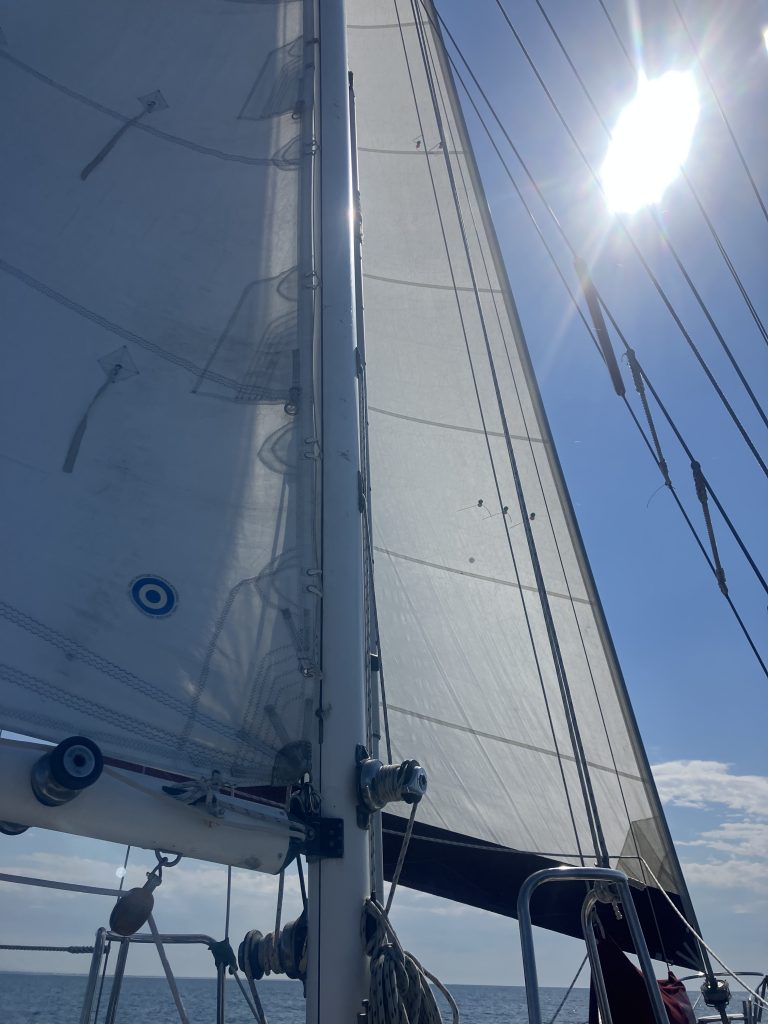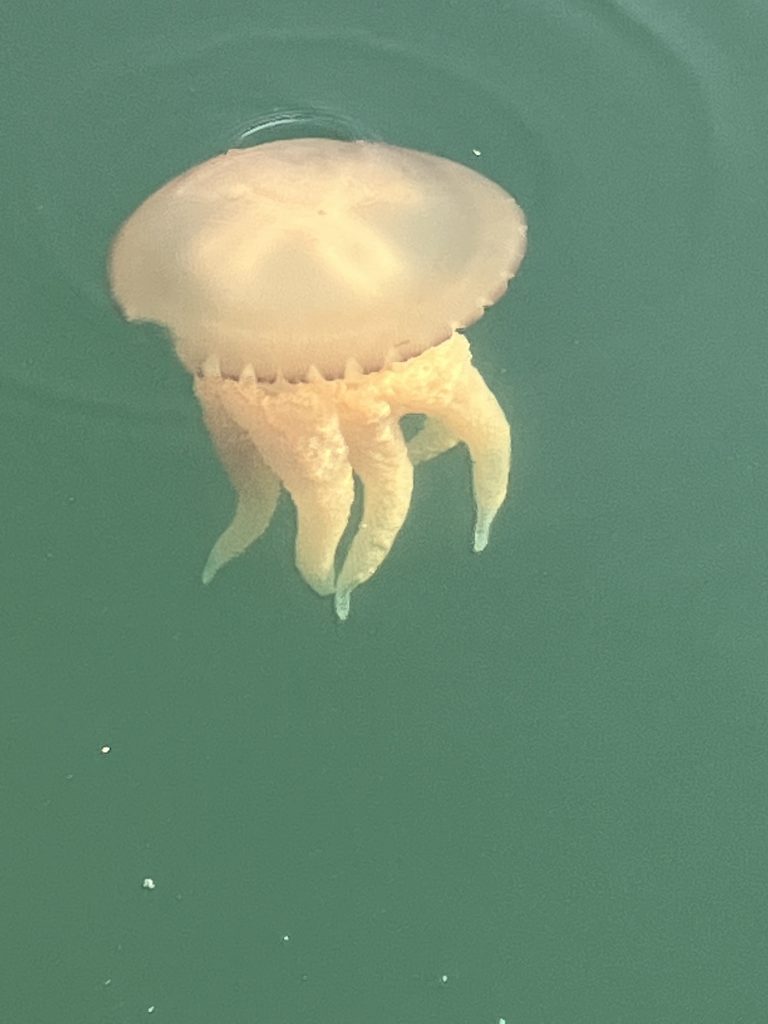
Despite the delay in days waiting for the headstay replacement, it worked in our favor to wait for the seas leftover from the storm to ease. Unfortunately, so did the wind. We had a lovely sail for several hours down the coast, but eventually the wind died and we were forced to motor.
Most boats were opting to sail only during the day due to Orca attacks on sailboats that have been occurring for three years now with no end in sight. No one knows why, but they (often juveniles) slam the boat from side to side and chew on the rudder, often completely disabling boats and requiring tows to shore. To reduce the risk, many boats move in water no deeper than 20 meters (60 feet), as attacks only seem to happen in deeper water. This is dangerously close to shore (rocks), and involves looking out for ever present fish traps, and requires movement only during the day.

Many boats make the offshore passage without incident, but it’s the boats getting “attacked” that make the news and stay in our minds. Most of these incidents were happening 80+ miles to the north (where the tuna are currently running), and we have a bottom color (red as opposed to the more appetizing black) as well as a hull/rudder design that should not attract Orcas. Off we went offshore. We saw plenty of dolphins, new jelly fish (barrels), a few birds that actually landed on board, but no Orcas – whew. We were lucky, as a boat was attacked in the same waters just three days after we passed through (so much for theories).

We did make one stop in Peniche, to rest for a couple of hours and wait for the wind to become more favorable again. It was a lovely anchorage that we had to ourselves in front of a dune swept beach. We were able to nap a bit, and then take off again early evening, knowing we would reach the Cascais anchorage in daylight rather than in the dark.

Recent Comments